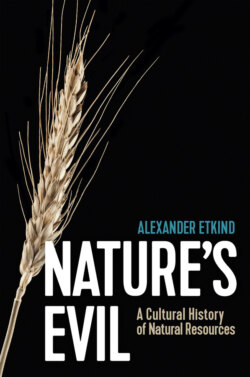Читать книгу Nature's Evil - Alexander Etkind - Страница 30
Meat
ОглавлениеAnimals are at the top of the food chain, and a calorie of meat was always more expensive than a calorie of plant food. In many cultures, the consumption of meat was a privilege of the elite. Meat was available for mass consumption only on rare occasions – that was the gift economy in action. Alcohol was consumed with the meat and the whole event was a feast – a communal release of physical and sexual energy.
All world religions, except for Zoroastrianism, surrounded meat eating with various prohibitions. In India, eating cows is forbidden; in the Middle East, pigs are banned; in the British Isles, dogs and horses are off the menu. Anthropologists theorise that these taboos follow the rule ‘edibility is inversely related to humanity’.1 Some cultures consider horses to be close to humans and they aren’t eaten, while in other cultures cows have this status. Prolonged fasting – regular abstinence from meat and dairy products – was embraced by Catholicism and the Orthodox Church. Over a couple of thousand years, this practice has demonstrated that the plant-based diet is good for physical health.
Meat perishes quickly, which makes it unsuitable for long-distance trade. Drying, smoking or, alternatively, freezing meat commodified it. For centuries, the British Navy lived on salt beef and rum. This diet resulted in scurvy, which seamen thought was a severe form of seasickness. Farmers focused on hides and wool – they could be preserved and traded, and meat was eaten within the household. Once again, distance from the town was a crucial factor. Meat could be sold if a farm was close to the town, but every extra kilometre lowered the profit, especially if it had to be transported overland. Selling sausage and cheese made economic sense in places where they could be transported by water, preferably along a canal. An alternative was to drive live cattle to market, but that also entailed losses in proportion to the distance.
Haute cuisine was unknown in Europe until the fifteenth century. Asia was more advanced in this as in other matters of luxury. But Western Europe ate more meat than Eastern Europe, and much more than China. Depopulated by the plague, Europe in the Middle Ages was rich in meat. Herds of horned cattle were taken to Venice by boat from Dalmatia or driven overland to Germany from Hungary. One such herd might contain as many as 20,000 oxen. Naturally, only large towns could handle such quantities of perishable food. The upper classes ate more meat than the lower orders, and more meat was eaten in capital cities than in the provinces. In Paris in the sixteenth century, pork was considered as poor man’s food; merchants and noblemen preferred venison. By the crisis-ridden seventeenth century, meat consumption was lower but nevertheless remained at the level of an average of 20 kilograms per year. On the eve of the French Revolution, the average Parisian consumed three times as much meat as his average fellow countryman in the provinces.2
Many states saw controlling the grain supply as their strategic aim, but it was rare for them to pay similar attention to meat. Robert Malthus considered dairy and beef herds a luxury. Land given over to cattle doesn’t produce more food but decreases supply. Following his lead, vegetarian activists calculated that the amount of food from an acre would increase tenfold if people moved from a carnivorous to a vegetarian diet; they called for pasture land to be turned over to arable farming.3 But the sparsely populated lands of the New World offered unheard of opportunities for cattle grazing. At the end of the nineteenth century, millions of semi-wild cows and bulls roamed on the Argentinian plains. The only tradable parts were dressed hides. The gaucho ate the tongues and left the flayed corpses to the coyotes. All this changed thanks to the discoveries of Justus von Liebig.
The founder of organic chemistry, Liebig remembered the terrible year of 1816, when Europe didn’t see the sun because of the eruption of a volcano on a distant island in Asia; in Darmstadt, where he was born, people were on the verge of starvation. All his future work would be concerned with food and fertilisers. In 1847 Liebig invented a method of making a meat extract which he decanted into glass bottles; 30 kilos of meat produced a kilo of the extract, which was as thick as syrup and kept very well.4 The first factory was built in Uruguay; the sales in Europe were healthy. Then Liebig invented the stock cube and a method of preserving meat in tins. Argentina and Uruguay underwent an unprecedented boom; European hospitals, armies and the poor got a new source of provisions. Then the Chicago slaughterhouses invented a way of freezing meat. Refrigerated units were put on rails or installed in the holds of ships. Later, smaller refrigerators for domestic kitchens were produced. Frozen meat transformed the lives of billions of people. A scarce and expensive resource, formerly available only to the elite, became an item of mass consumption. Such inventions fed the growing cities, engendered new flows of commodities, created new fortunes. It was only at this point that long-distance trade started to compete with local trade. In the 1930s two Swedish economists, Eli Heckscher and Bertil Ohlin, described this effect; the model they constructed used the old production factors of land, labour and capital and took long-distance trade into account.5 However, the model didn’t include the costs of the new wonders of trade – the emissions from the burning of coal and the pollution from the packaging waste.
